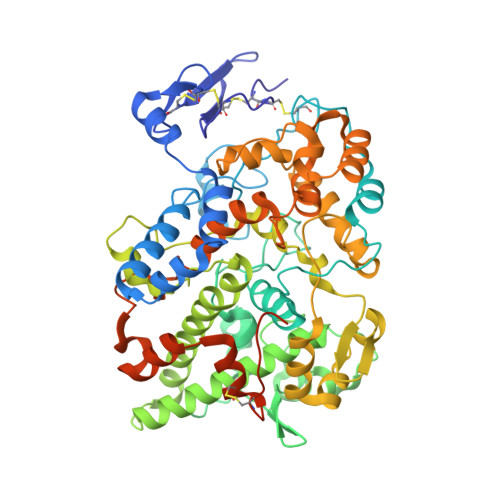nido-Dicarbaborate Induces Potent and Selective Inhibition of Cyclooxygenase-2.
Neumann, W., Xu, S., Sarosi, M.B., Scholz, M.S., Crews, B.C., Ghebreselasie, K., Banerjee, S., Marnett, L.J., Hey-Hawkins, E.(2016) ChemMedChem 11: 175-178
- PubMed: 26088701
- DOI: https://doi.org/10.1002/cmdc.201500199
- Primary Citation of Related Structures:
4Z0L - PubMed Abstract:
Carbaboranes are increasingly studied as pharmacophores, particularly as replacements for aromatic systems. However, especially ortho-carbaborane is prone to degradation of the cluster, which hampers biological application. This study demonstrates that deboronation of the cluster may not only lead to a more active analogue, but can also improve the solubility and stability of a carbaborane-containing inhibitor. Notably, introduction of a nido-dicarbaborate cluster into the cyclooxygenase (COX) inhibitor indomethacin results in remarkably increased inhibitory potency and selectivity for COX-2 relative to the respective phenyl analogue. The first crystal structure of a carbaborane-containing inhibitor bound to COX-2 further reveals a novel binding mode for the inhibitor that is strikingly different from that of indomethacin. These results indicate that nido-dicarbaborate is a promising pharmacophore that exhibits properties which are also highly beneficial for its introduction into other inhibitor classes.
Organizational Affiliation:
Institut für Anorganische Chemie, Universität Leipzig, Johannisallee 29, 04103, Leipzig, Germany.




















